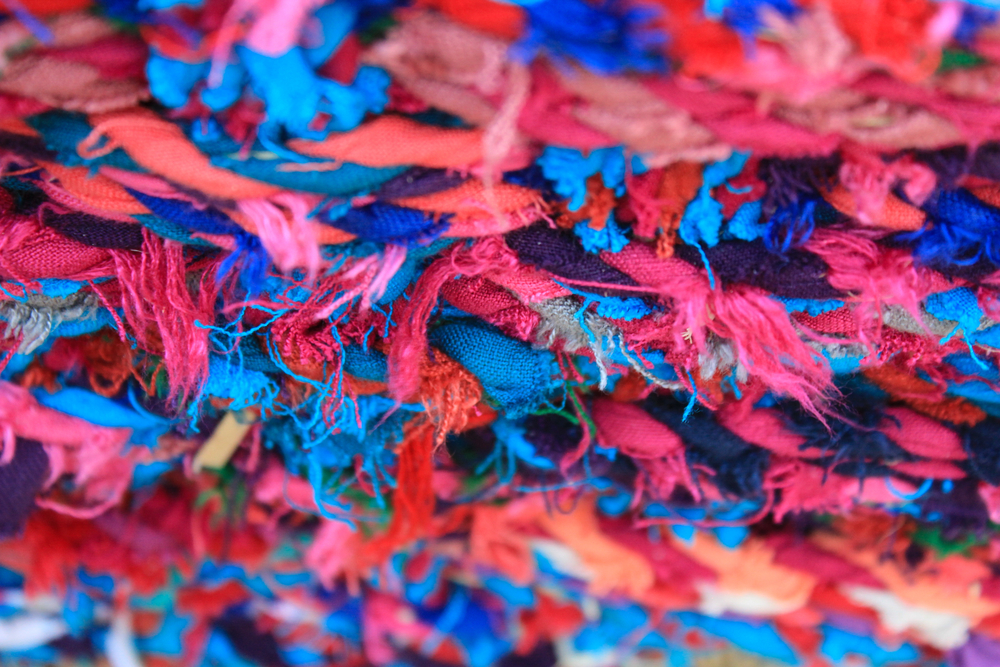A Report On Overproduction In The Apparel Industry



One of the greatest challenges in developing a stable Fashion industry is the prevalence of overproduction in the industry. In just five years, some of the world's best-known fashion businesses have burned £90 million worth of undesired goods, while many fashion brands have billions of dollars’ worth of unsold inventory. Fashion overproduction differs from post-consumer garment waste in that it occurs when a corporation intentionally produces more products than it sells.
Many fashion firms, particularly high-end ones, have a policy of destroying their garments after they are no longer needed. A garment company's reputation, price, or exclusivity won't be harmed if its products don't end up on second-hand markets or discounted sales. The problem isn't limited to premium brands, however.
Why do companies produce so much clothing when overproduction is such a frequent problem?
Finding the exact amount of overproduced garments might be a challenge. It's common for companies to be reluctant to divulge this sort of data. About 30 percent of the world's apparel is expected never to be sold. More than a third of all clothing is marked down to close to cost. As a result, more than half of the world's total apparel output isn't selling in stores for its full retail value. Unsold clothing is a big problem because the fashion industry generates 150 billion garments a year, enough to supply 20 clothes for every person on Earth, so 30 percent is a lot of lost material. It is in everyone's best interest to avoid overproduction because it wastes time and money and harms the environment.
For a variety of reasons, brands engage in overproduction. A variety of factors contribute to this, including erroneous market predictions and a lack of faith in suppliers' ability to deliver clothing on time. Overproduction in the fashion sector, on the other hand, has four primary causes:
A Shift in Consumer Preferences

Fashion's ever-shifting trends can't be predicted, not even by the most accurate models. There may have been an initial surge in demand, but that need may have faded quickly, leaving a corporation with stock that is no longer in demand. As consumer tastes evolve, certain businesses have evolved to quickly develop new products like Recyclable Textiles. As a result, the fashion industry will be forced to produce even more.
Savings on expenses
Simply put, the cheaper the price per item is when more goods are ordered in a single batch. For businesses with a high-volume business model, ordering huge amounts in excess can save money, and these can then be sold at a discount while still making a profit, sustaining the cycle of fashion overproduction and subsequently, of excessive consumption.
An Attitude of Constant Purchasing
The average American will buy 70 new articles of clothing per year. The fast-fashion industry, which is built on impulse purchases and short-lived trends, has transformed the fashion industry. Companies, over-produce to meet the demand of consumers who are prone to over-buying. Fashion companies can meet the demands for any last-minute purchase by over-producing inventory.
Inaccurate Market Predictions
Occasionally, market forecasts are incorrect. A company's sales forecasts may be incorrect even if the company does not have an attitude of fast-changing client preferences in mind As a result, they are left with an abundance of unsold inventory.
What Happens to All That Extra Clothes?

It all depends on the marketplaces a brand operates in and how cost-effective it is to dispose of unsold products.
Remarketed, donated, and reduced in price
Overproduced apparel can be found at discount retailers for some brands more frequently than in their regular stores. There are non-competitive markets, such as those in various nations where clothing can be sent. As an alternative, clothing can be purchased from bargain stores. As if that wasn't bad enough, several brands now have more discount outlets than regular stores to liquidate excess inventory.
Clothing can be donated to a good cause as well. The idea of a brand donating unwanted merchandise to a charity may sound noble, but it doesn't necessarily work. It can lead to organizations dumping unwanted clothing in third-world countries under the pretext of donation if done carelessly. This only serves to shift the source of the pollution.
Some environmentally conscious companies have begun reusing unsold inventory and making Recyclable Fabric. Reintroducing it to the manufacturing process. Although it's not perfect, it's better for the environment than other options for unwanted clothing.
In the end, corporations must alter their production processes and business structures. When it comes to on-demand production, there is a lot of potentials. This is when clothing is only created to order, eliminating and lowering the risk of over-production. On-demand apparel manufacturing is gaining ground in the industry but has yet to prove itself as a practical solution to overproduction. Overproduction can also be avoided through smaller product runs, which produce a smaller number of things.
Consumers
At the end, where we spend our money says a lot about the kind of industry we want to see flourish in our country. We're helping to make the fashion industry more environmentally friendly by assisting businesses that are attempting to move away from mass production. Purchasing high-quality clothing can also assist cut down on the amount of clothing that is being produced and consumed. Because they endure longer and don't need to be replaced as frequently, high-quality items don't contribute to an overproduction cycle.
How the Fashion Industry can deal with the overproduction Problem?
The fashion industry has been plagued by the issue of overproduction for quite some time. While some degree of overproduction in the fashion industry may be inevitable, it may be greatly improved. We can reduce the amount of unnecessary waste produced by the fashion industry by altering our relationship with the industry and working collaboratively with consumers, businesses, and governments.
Artificial intelligence and fashion waste
Fashion waste can be reduced with personalized production and new technology. Indeed, this is a difficult task for businesses, which must constantly adapt to shifting market trends and shifting client expectations in a highly competitive environment. In contrast, corporations are now able to use technology-based techniques to get answers that are backed by accuracy. Additionally, these tools provide greater visibility into the global supply chain and the ability to customize production.
The fashion industry's new production and inventory management system is more interconnected than ever before. Breaking down traditional organizational barriers and bringing together the teams responsible for design, production, sales, and marketing may all be made easier with the use of artificial intelligence (AI) and advanced analytics.
Predicting the future and preparing for demand
Trends are the starting point of the product development process because they are so fundamental to the world of fashion. It's difficult to keep up with the fast pace of social media trends, which might lead to inaccurate forecasts and product assortment plans. For example, if data shows that plaid coat sales from last year are slowing down, the degree of demand for that trend is computed and integrated into the brand's product range for the future.
Prototyping on the Fly
On-demand production is becoming more popular as a response to shifting client demands. Traditionally, products were "pushed" onto the market based on forecasts provided by design and merchandise teams. As a result, fewer inventories and greater operational flexibility can be achieved when products are instead 'drawn' into the market.
The on-demand strategy allows for greater flexibility, but the overall cost of production tends to be higher. If the supply chain infrastructure can manage shorter turnaround times, then it will have an impact. Large retailers like Zara are on board with this strategy and use consumer-centric data to adjust their inventory in real-time based on client demand.
Micro-factories
The cost per unit decreases when fashion brands produce in large volumes. High-volume low-cost orders are often produced at a traditional factory with a large resource footprint in the fast-fashion paradigm. There are new business models that empower firms to be agile in their manufacturing processes, such as the micro-factory model.
For example, advancements in CAD/CAM, digital patterning, laser cutting, and digital textile printing have made it feasible to create less but generate more with a high degree of personalization in the digital textile revolution. Sportswear Company Adidas has put the idea to the test in this way. Prototypes and customized high-speed production are being tested in micro-factories. For local and low-minimum production, small designers could also share such facilities.
The change will take time, but technological capabilities will speed up the process and maximize investment returns. A brand may be able to offer micro-targeted items if data analysis is available at the city level and hyper-local supply chains are closer to reality. A more innovative and ecological approach to producing garments must be adopted by the industry as a whole, from mass market to luxury brands.
Final Words
Overproduction in the fashion industry is so engrained that it is easy to miss. As a result, it has a wide range of effects that might be disastrous if mismanaged. Around 10% of worldwide carbon emissions are attributed to the fashion industry. Excessive manufacturing adds to the pollution, and clothing that is thrown away or burned, adds to the industry's annual solid waste output of 92 million metric tonnes. To read similar informative articles on Fashion Industry, visit the Fashinza Platform.



















